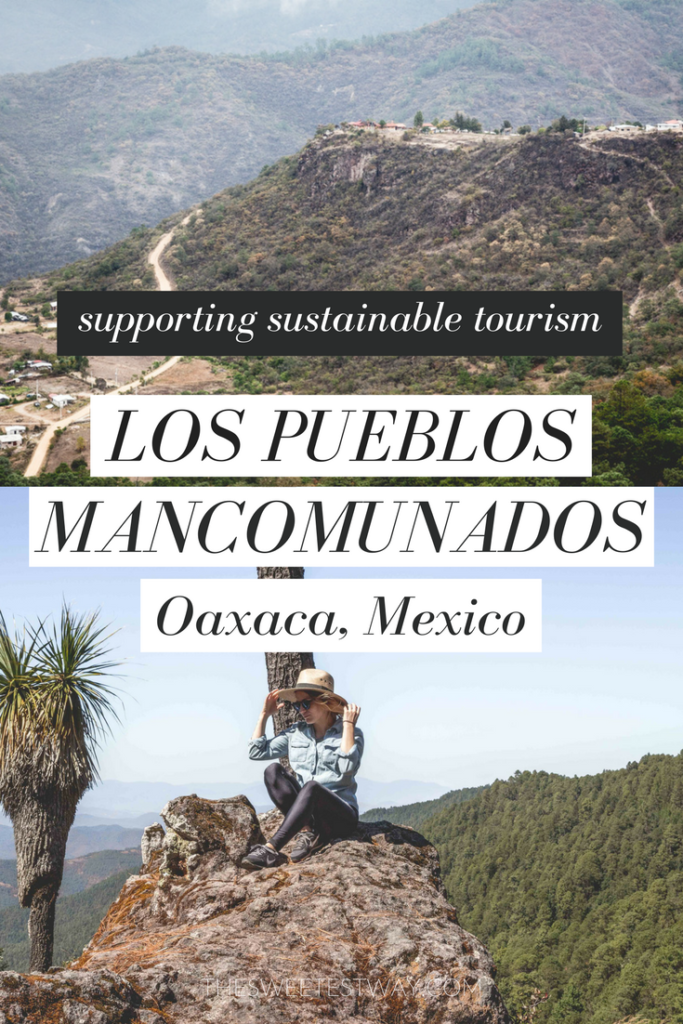Perched high atop the Sierra Norte Range in the southwestern Mexican state of Oaxaca, you’ll find a smattering of small Zapotec villages that have opened their doors to travelers–outdoor enthusiasts, in particular.
This collection of villages, known as Los Pueblos Mancomunados, has developed an eco-tourism program that gives visitors an intimate look at traditional village life and facilitates wilderness excursions through the hiking paths that meander between the eight villages.
Truth be told, I knew little about these villages prior to my arrival in Oaxaca; I’d simply heard about them in passing and had intentions of doing some proper research once I’d settled into my new temporary home.
Conveniently, some of my friends began arranging their own excursion and invited me to tag along. The only downside to this good fortune was that it meant I procrastinated even further on researching them myself. Everything I now know about Los Pueblos Mancomunados I learned through first-hand experience (which is pretty much how I roll, come to think of it).
While it’s possible to visit Los Pueblos Mancomunados more or less independently, our group decided that for the sake of convenience, it was better to arrange everything in advance. This included our transportation to and from Oaxaca, guides for every part of the hiking trail, food for two days, and a night of accommodation in one of the villages.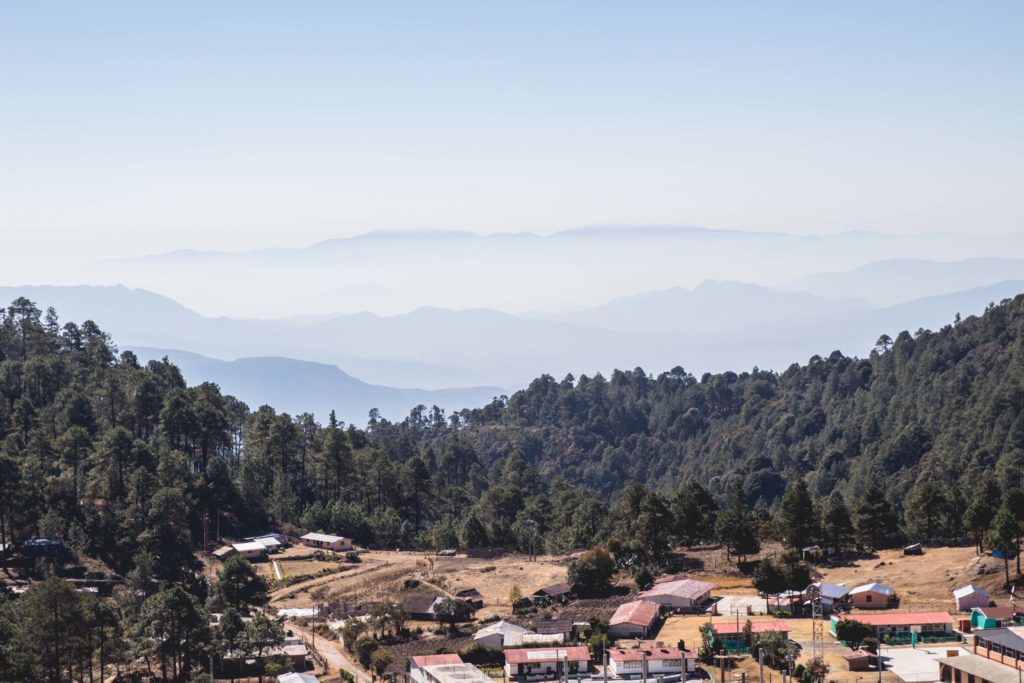
There are certain parts of the trail that require you to have a guide, however, and we quickly discovered why–trails are not always well-marked and it would be all too easy to get lost. We did encounter travelers who were DIY-ing the experience, arriving by public transit and paying for guides only when necessary, and we agreed this would have been a good option had we been backpackers on shoestring budgets.
But we enjoyed how seamlessly the two-day trip seemed to go and appreciated the opportunity to chat with and learn from our friendly guides along the way–not to mention our accommodations were anything but basic and the meals we received were robust, which was necessary given the amount of ground we covered (roughly 32 kilometers of hiking over two days–at altitude, mind you).
After a slightly nauseating early-morning taxi ride from Oaxaca (about 1.5 hours duration), we arrived at our starting point, the village of Cuajimoloyas. We set off with the first of our two guides, Yolanda, a spry woman we suspected was in her forties but who looked hardly a day over 25.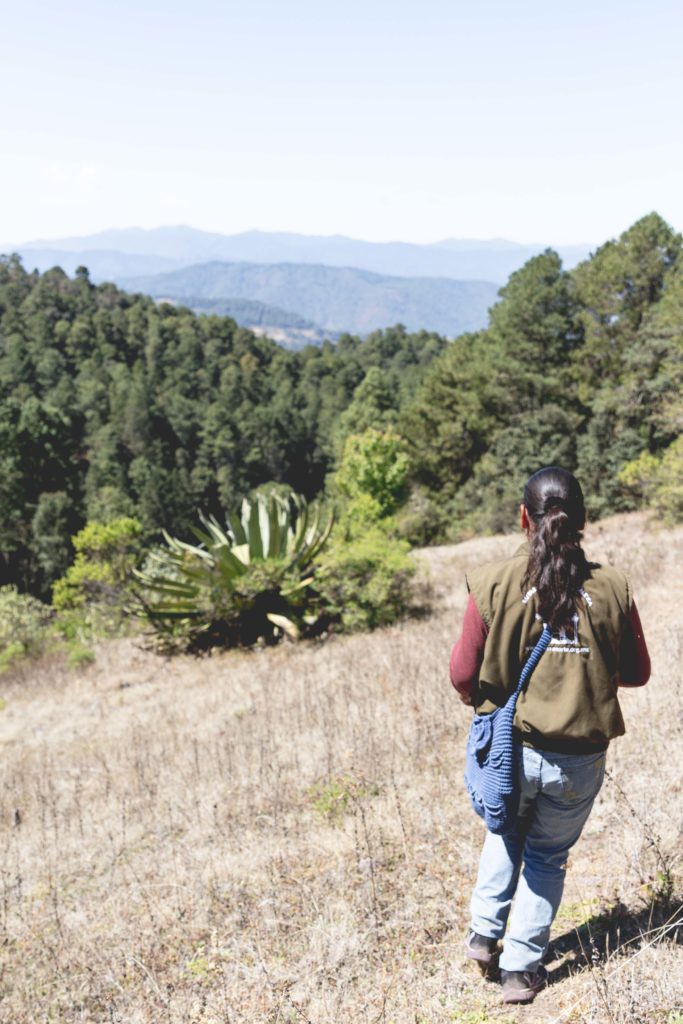
We spoke only Spanish with her and surely tested her patience as we stopped every few meters for photos, but she humored us and described various plants and agricultural practices as we passed through local farmlands before eventually entering dense tropical forest.
If you know anything of my affinity for succulents, you can imagine that this trek was pretty much the greatest two days of my life. We were in the land of agave, after all, and they were everywhere. The most common type we encountered was the good old Agave americana, colloquially known as maguey in Spanish or century plant in English.
The term century plant seems most appropriate when you consider that these gigantic sons-o-bitches literally live for a hundred years or more. I also learned just how sharp and stabby they are and why this, appropriately, makes them effective fences for livestock. An up-close and personal look (or when you accidentally trip over one when you’re not looking) reveals sharp rose-like thorns all along the edges of each leaf.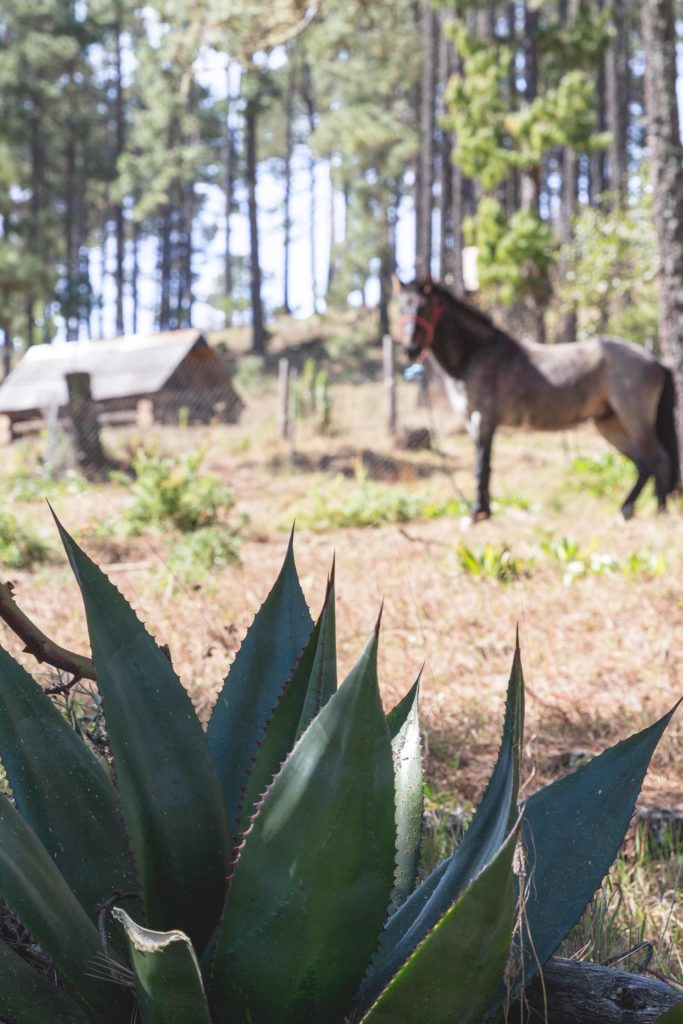
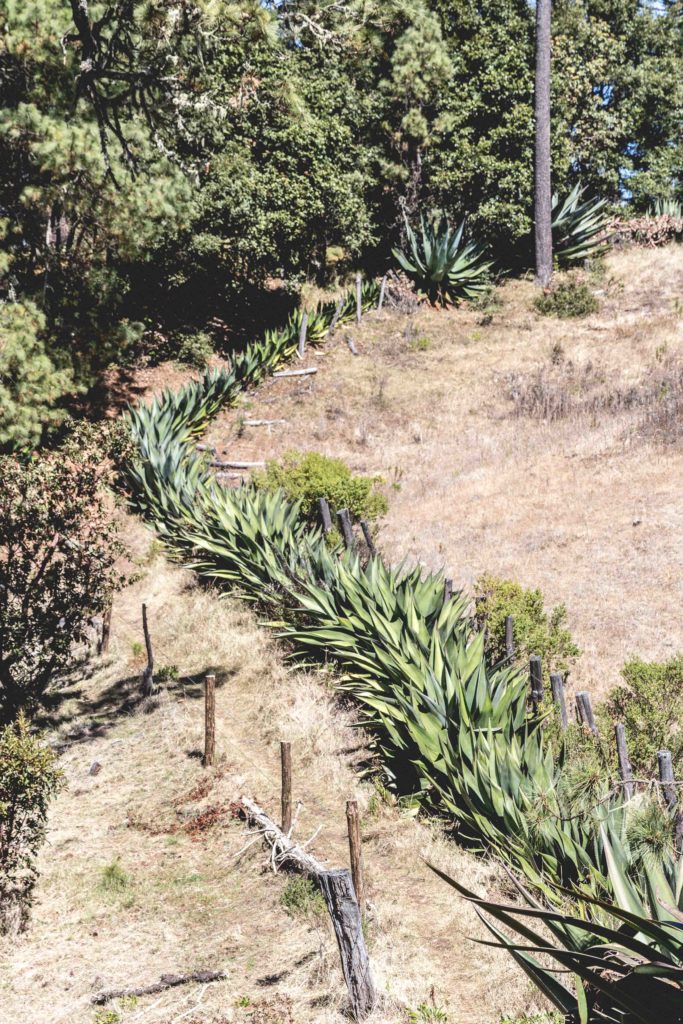
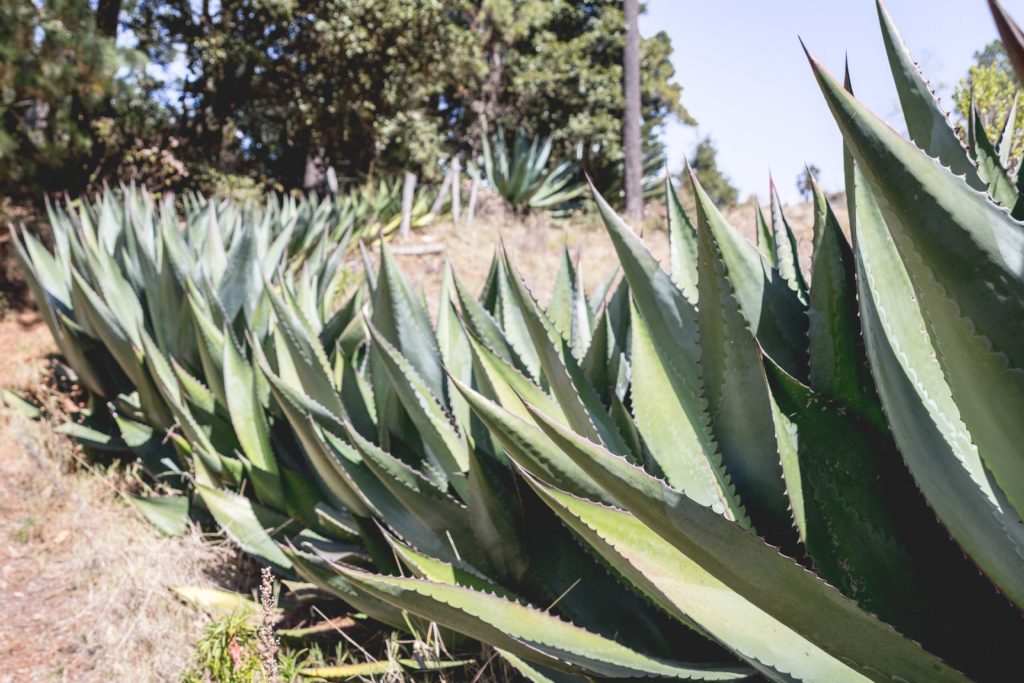
The vistas at our lunch stop were arguably some of the most spectacular of the whole trip (but to be fair, there were a lot of spectacular views). We enjoyed our provided bagged lunches as we took in the splendor all around us before finally saying goodbye to Yolanda and welcoming our second guide, Samuel.

The scenery morphed once again as we began our descent toward our destination for the night, the town of Latuvi. This downhill portion was my least favorite part of the hike. A word to the wise: Wear appropriately-sized shoes for this trek and trim your damn toenails before departure if you don’t want to end up feeling crippled like somebody I know (me).
Though slightly less talkative than Yolanda, Samuel was equally adept at pointing out beautiful things as we hiked; clusters of wild orchids here, dangling orange bromeliads there.
The rest of us were ever-so-slightly fern-obsessed, spouting off every silly fern pun our tired brains could muster (Our fern-dings were inconclusive). Did you know the state of Oaxaca is home to nearly 700 species of ferns? Now you do. Now you fern-ally do.
But no matter how much fern we were having, by late afternoon we were more than ready to arrive at our evening outpost. Our feet were killing us and our snack reserves were rapidly dwindling. When faced with a choice of taking a longer, flatter route to reach Latuvi or a shorter, steeper one, we unanimously voted for the more challenging trail that would get us there fastest.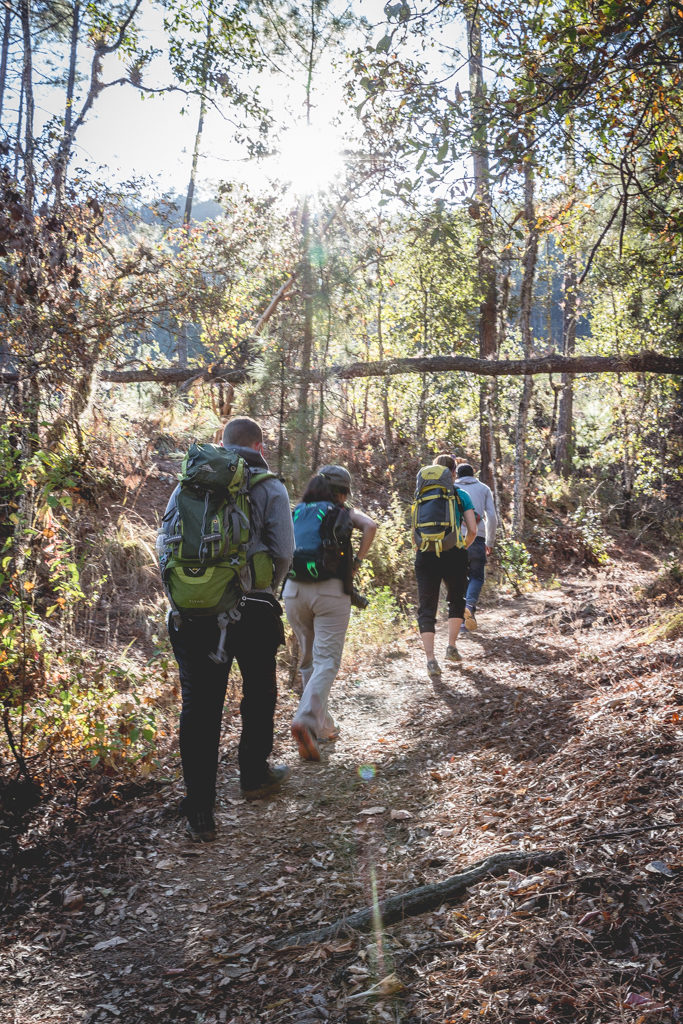
Upon arrival in Latuvi, we were greeted with even more spectacular views. The view from our lodging for the night was fairy-tale gorgeous with layers upon layers of mountains stretching into the distance, glowing various shades of blue as the sun sank ever closer to the horizon.
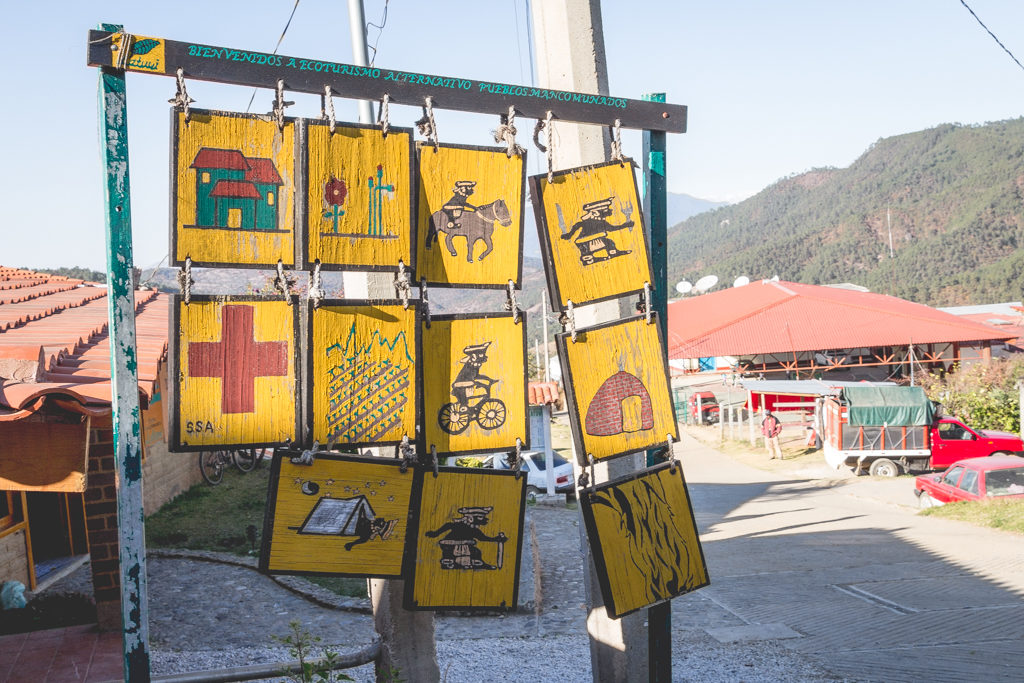



Oddly, our second meal of the day took place just after arrival around 5 pm, but this was not our dinner. No, that would come later, after the temazcal sauna experience we had pre-arranged (and paid extra for). I sipped my coffee-in-a-bowl before devouring soup and a plate of cheese, beans, and salad (my vegetarian substitution for the fish my friends were served).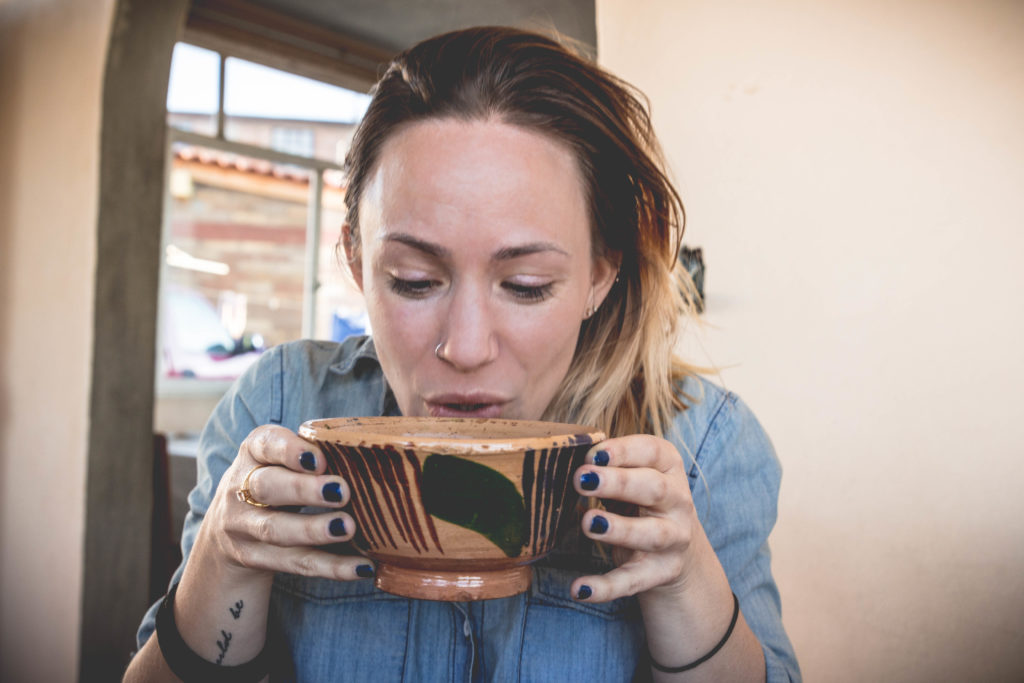
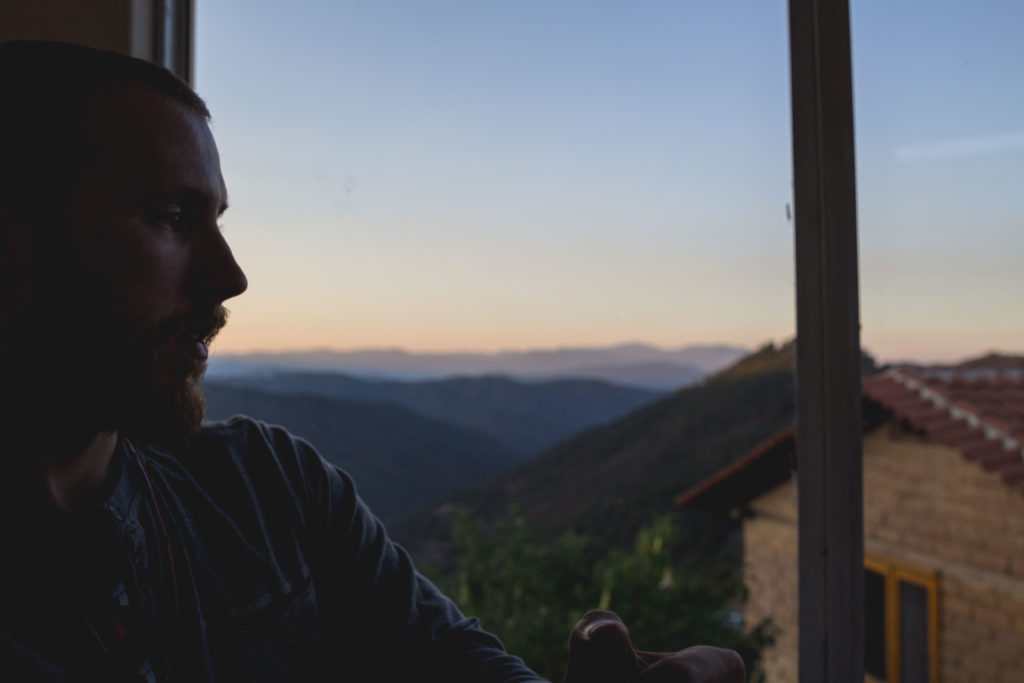

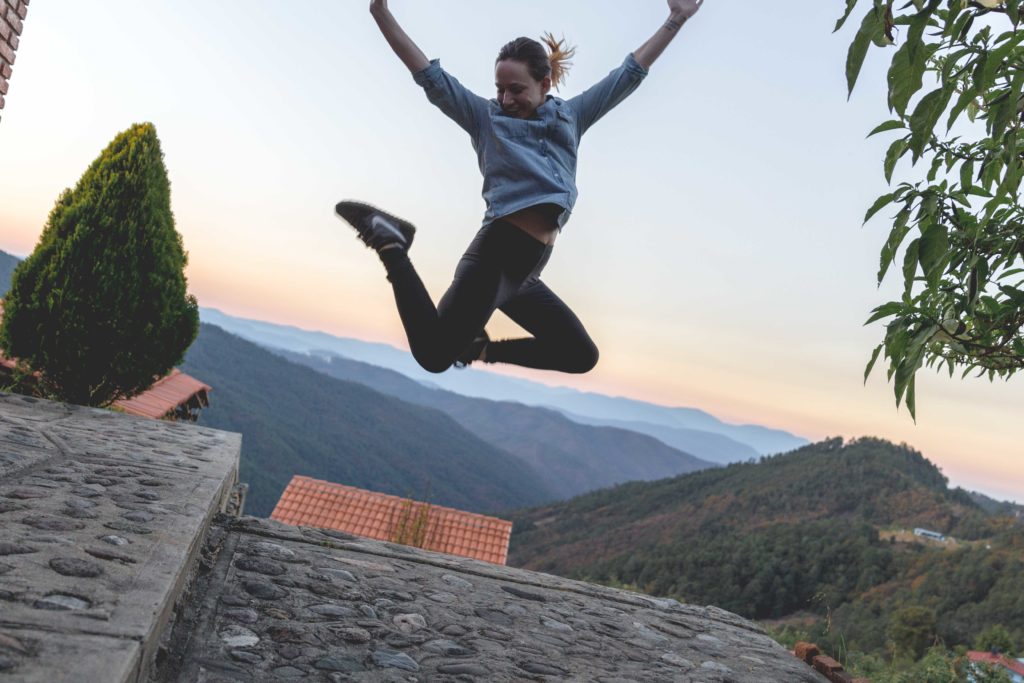
As we had been instructed that we needed adequate time for digestion before entering the temazcal spa, we gladly kicked our feet up for a few hours and chatted about our experience of the day. The climate was noticeably colder at our new altitude (2,441 meters or 8,009 feet), so we hunkered down in our surprisingly sweet room and attempted to preemptively massage the soreness out of our overworked muscles.
If you’re still wondering what the heck a temazcal spa is, anyway, allow me to attempt to shed some light.
This sweat lodge is a pre-Hispanic indigenous tradition that is intended for more than just physical rejuvenation; it is meant to cleanse the mind and spirit, as well. Housed in an adobe oven (yes, they told us we were going to sit in an oven), hot volcanic rocks are doused in an herbal infusion, releasing a purifying steam into the air; the space is sealed and completely dark throughout, and an experienced shaman typically chants and guides you through a spiritual journey while you sweat out your physical impurities.
Or, well, so I thought.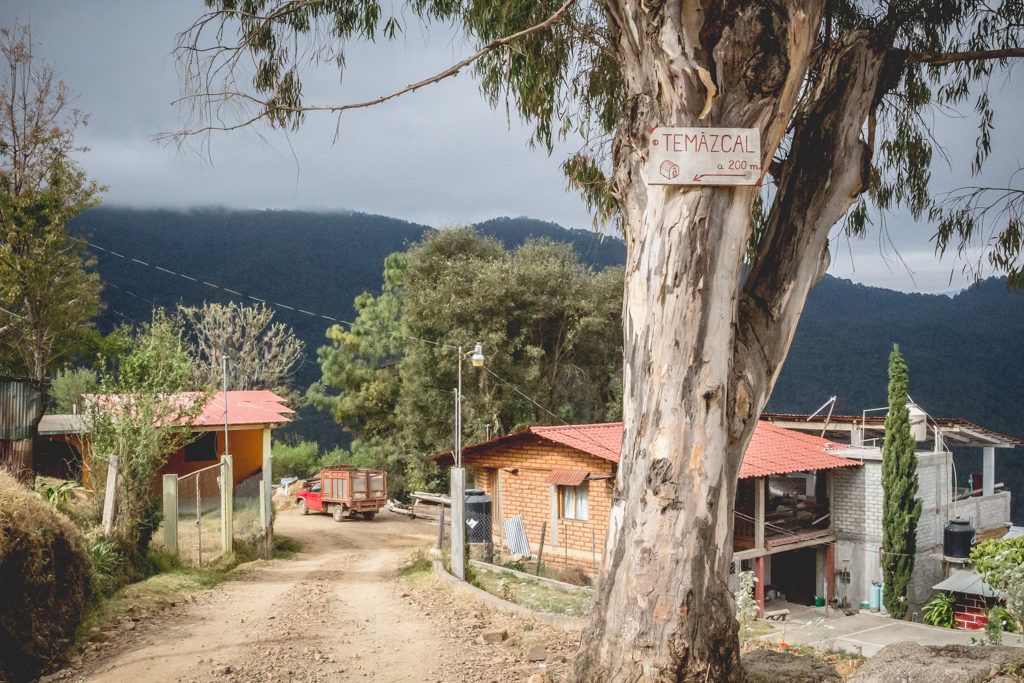
Our temazcal turned out to be something of a comedy of errors more than anything else. We readied ourselves according to the instructions we thought we’d received in Latuvi’s tourism office: Wear your underwear or swimsuit (whatever you plan to wear in the spa), bring a towel, and wrap yourself in your blanket for the short walk to the temazcal. Because it was cold, of course.
Heeding these directions, we took off down the hill. It was dark now, and with the absence of light pollution, the stars were out in full force. We even spotted a huge glowing orb that we suspected was Jupiter. The walk took considerably longer than we’d anticipated, but we had a local leading the way with a flashlight, helping us avoid the many obstacles on the rocky dirt road.
When we arrived, we were greeted by the shaman, a tiny older woman with an unexpected frankness about her. Perhaps it was just her usual demeanor, or perhaps she was annoyed that we were entering the temazcal so late at night. It was already close to 8 pm at that point, and we’d be there for roughly two hours. We’ll never know, but I’ll always wonder.
We shed our blankets and towels and were given sheets to wrap around our shoulders instead as we lined up to enter the temazcal one by one. She brushed each of us from head to toe with a cold, wet, fragrant herb (one we’d seen many times on our hike, although the name escapes me now) before sending us in.
We were provided with a pitcher full of cold tea to sip while we sweat; necessary given that we would be inside for anywhere from 30-45 minutes. Our shaman then entered the temazcal with us to give us a brief explanation, provide us some basic safety information, and tell us how to get out when we were ready (the oven could only be opened from the outside, so we’d have to knock and ask to be let out).
For me, this is where the experience fell flat. No chanting, no spiritual guidance–just a brief demonstration of how to keep the steam going and not much else.
I had imagined a peaceful and relaxing environment conducive, at the very least, to a brief meditative state. Instead, I found that even our darkness was interrupted every few minutes by the need to switch on a flashlight in order to pour more water on the hot earth at the back of the oven.
Nevertheless, the hot steam was relaxing for our aching muscles and by the sheer volume of sweat released, I have to assume some impurities left with it. I was the first one to tap out after roughly 40 minutes and head for part two of the experience, a therapeutic massage.
While I had no complaints about my massage (other than the fact that it was cold and we were now drenched in sweat, making the cold air all the more obvious), my friends weren’t so lucky. One member of our group had a masseuse who was clearly untrained, taking cues on what to do next from her more experienced friend. This encounter was only enhanced by her unexpected full-frontal massage (but who doesn’t love a good boob rub?).
The final friend out of the temazcal waited a solid hour for her own massage to begin, only to have it rushed at the last minute with four hands massaging her at once while the rest of us laid on our beds shivering with no clothes to put on–because we hadn’t brought any.
Only later that night, after the shaman’s husband had generously driven us back up the hill to our lodging because it was freezing and WE HAD NO CLOTHES, did we understand the instructions we’d been given earlier (and why the ladies at the temazcal had laughed so hard at our idiocy)–we were meant to bring an EXTRA set of underwear with us, not simply wear our underwear and nothing else.
Needless to say, my first temazcal was not quite what I had hoped or expected. Would I try it again? Sure I would. Was it worth the extra 500 pesos we paid? Still, my answer is yes. Because if I don’t ever get the chance to experience this again, I can still say I tried it once.
Back at our room for the night, we scrounged for snacks–we’d returned far too late for the pre-arranged dinner and the kitchen was already closed. Thankfully, Susan had a few granola bars to share and we’d saved a few pieces of fruit from our bagged lunches.
Meanwhile, we attempted to warm ourselves up by building a fire in the tiny fireplace. Hilariously and to absolutely no one’s surprise at that point, the heat all got sucked up through the chimney and didn’t warm the room even a little.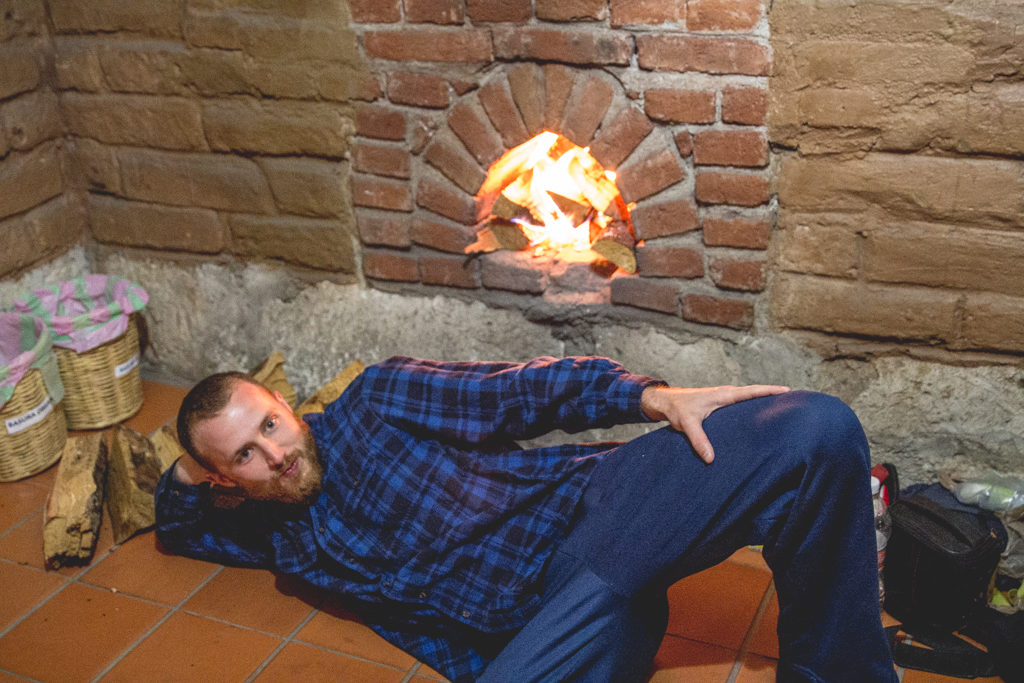
Our adorable fire was pretty much all just for show. Defeated but already laughing at the evening’s events, we crawled under our thick blankets and fell asleep by the dwindling glow of the fire.
The next morning after devouring platefuls of scrambled eggs, enormous tortillas, and enough hot sauce to fill a small kiddie pool, we set off on another long day of hiking. This time we’d be heading toward the town of Amatlán where we’d have our final meal before catching our ride back to Oaxaca.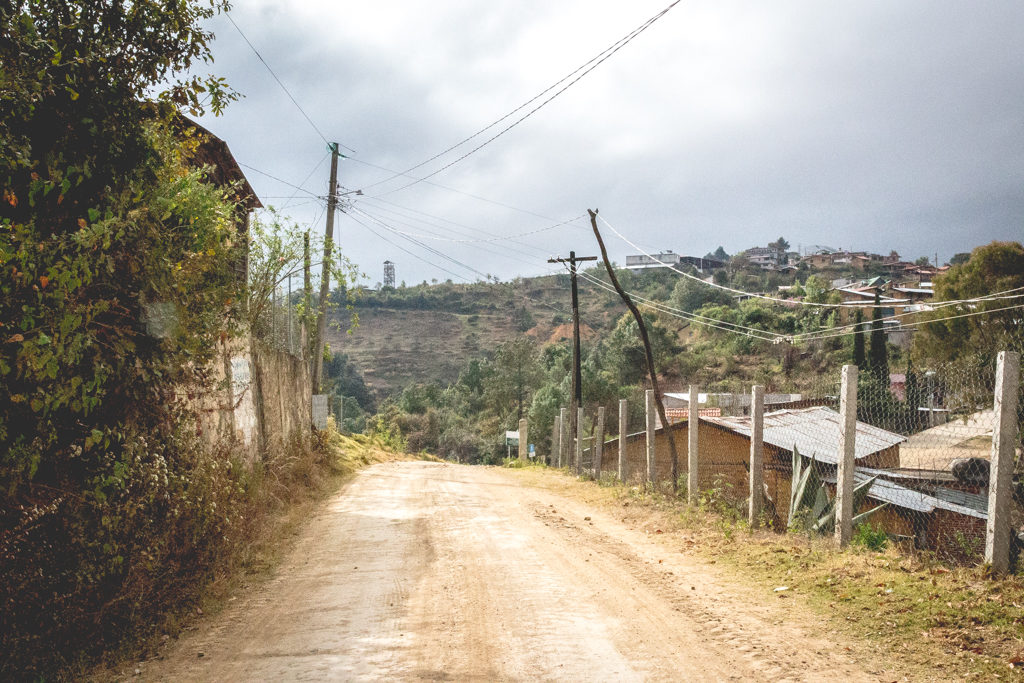
 Samuel was our guide once again and he assured us that this day would be less physically demanding. He was technically correct–large portions of this trail were flat or softly undulating–but we were still sore enough that those next five hours definitely didn’t exactly fly by.
Samuel was our guide once again and he assured us that this day would be less physically demanding. He was technically correct–large portions of this trail were flat or softly undulating–but we were still sore enough that those next five hours definitely didn’t exactly fly by.
We passed through a deep valley that made me forget for awhile that we were even in Mexico. Long strands of silvery moss flowed from tree branches and low-lying ferns reminded me a great deal of the temperate rainforests common in my home state of Washington.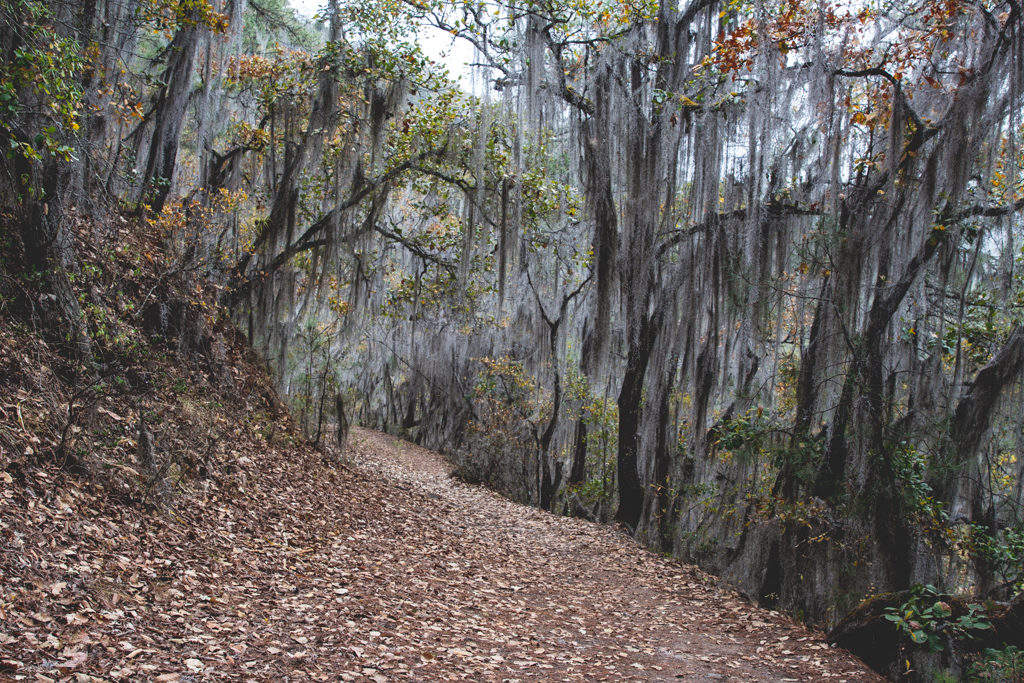
Every so often we’d come across an agave plant, and other types of succulents became more and more prevalent. Skinny cactus arms engulfed rocks and even whole trees, proving once again that we were indeed still in Mexico.




When our final destination finally came into view, my heart did a happy dance. Long treks like this don’t really agree with my body anymore and my knees, shins, and ankles were beginning to scream in protest. My quads were so sore by that point that squatting for a pee was becoming increasingly difficult and I worried I’d eventually take a tumble.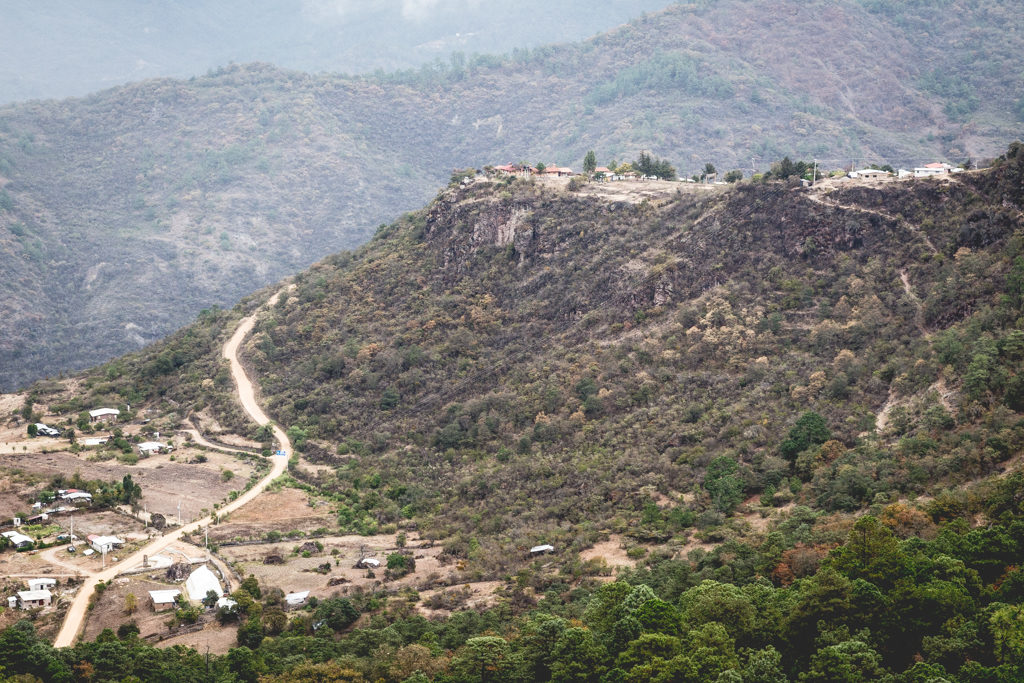

I was elated to finally reach the finish line, but I will admit those final views on the way there were something special. We passed briefly through another of the villages, Lachatao, before arriving in Amatlán.
The town of Amatlán felt distinctly more developed than Latuvi, perhaps due to closer proximity to good roads and easier access to bigger cities. We suddenly had cell service for the first time in two days, and buildings were quite obviously constructed with higher-quality materials.
We didn’t get to see the remaining four towns (Benito Juarez, La Nevería, Llano Grande and Yavesía), but we saw some of them from a distance during our excursion. There are many trails to be explored between Los Pueblos Mancomunados and many additional activities in which we could have participated, but two days and one temazcal was plenty for us.
The route we took–Cuajimoloyas to Latuvi to Amatlán–is just one option of many.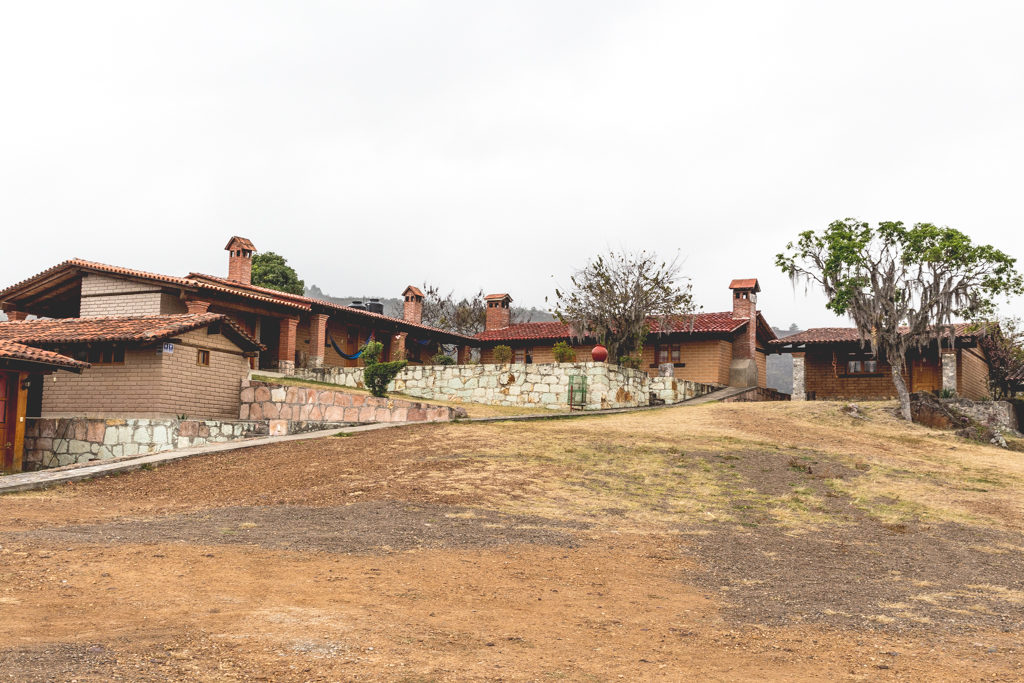
If you are visiting the city of Oaxaca and looking to get off the well-worn tourist trail, I’d highly suggest paying a visit to Los Pueblos Mancomunados for a few days. Disconnect from our hyper-connected world, commune with nature, and get to know some traditional indigenous ways of life.
Practical Tips for Visiting Los Pueblos Mancomunados
- For a full list of tours and activities that are available, visit Expediciones Sierra Norte
- To book a tour in person, head to their office in Oaxaca city (Calle de M. Bravo 210; Phone number: +52 951 514 8271)
- It gets cold at these high altitudes no matter the season, so bring warm clothes for the nighttime
- If you book a tour, some water will be provided, but it’s a good idea to bring extra
- Wear high factor sunscreen and consider wearing a hat–the UV index in the state of Oaxaca is very high
- Even if food is provided, it’s a good idea to bring your own snacks
- Bring cash in small denominations so you can tip your guide and in case you need to purchase anything in the villages, like extra water
- Our guides did not speak English; it will be helpful to know Spanish or have someone in your group who does
Had you ever heard of Los Pueblos Mancomunados? Would you consider a trek like this?